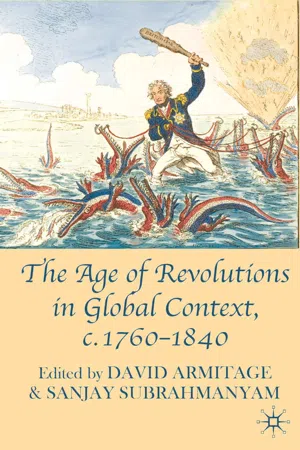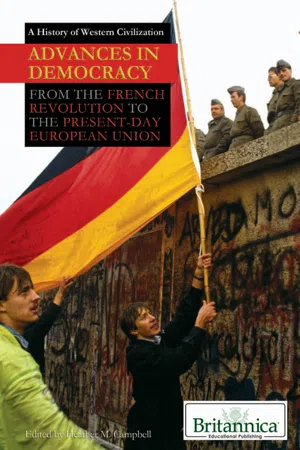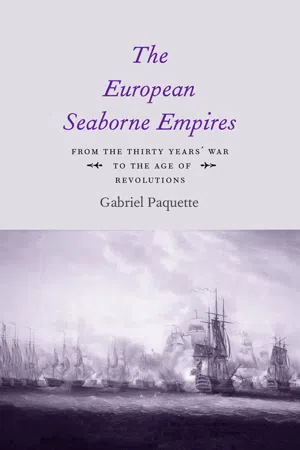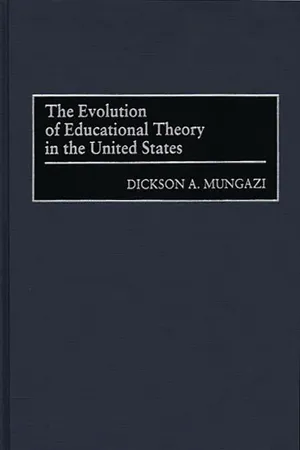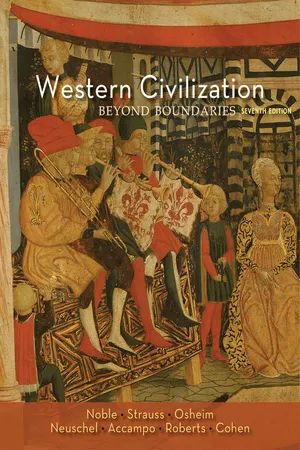History
Age of Revolution
The Age of Revolution refers to a period of significant social, political, and economic upheaval that occurred in the late 18th and early 19th centuries. It encompasses events such as the American Revolution, the French Revolution, and the Industrial Revolution, which brought about major changes in governance, society, and industry. This era marked a shift towards modernity and the rise of new ideologies and technologies.
Written by Perlego with AI-assistance
Related key terms
1 of 5
8 Key excerpts on "Age of Revolution"
- David Armitage, Sanjay Subrahmanyam(Authors)
- 2009(Publication Date)
- Red Globe Press(Publisher)
Introduction:The Age of Revolutions, c.1760–1840 – Global Causation, Connection, and Comparison David Armitage and Sanjay Subrahmanyam The decades on either side of the turn of the nineteenth century have long been known as the ‘Age of Revolutions’.The term is one of the most enduring period markers known to modern historians and has often been used by other scholars invested in identifying pivotal moments in the emergence of a putatively modern world.The revo-lutionary elements traditionally identified as most characteristic of the period and ripest with promise for the future included the popular sovereignty, natural rights language, and secessionist independence of the American Revolution, the anti-monarchical and anti-aristocratic decapitation of the Old Regime effected in the French Revolution, and the apparent explosion of productivity and prosperity associated with the Industrial Revolution.To these key features might be added the first formal efforts to abolish the slave trade (and, later, slavery itself), the proliferation of written constitutions as novel instruments for the distribution of political power, and an upsurge of nationalisms both within Europe and amid the first stirrings of decolonization in the Americas. The very heterogeneity of these developments defied easy causal integration but that did not prevent later historians from connecting many of them into a single epochal nexus.The combina-tions differed but the designation varied little, whether as a singular Age of Revolution or as a plural Age of Revolutions that were complex in their forms but cumulatively reinforcing in their long-term, world-historical effects.- eBook - ePub
- Jacob Burckhardt(Author)
- 2016(Publication Date)
- Routledge(Publisher)
understanding of historical development. To be sure, as stated above, the Age of Revolution makes this objective understanding the most difficult for us. As soon as we become aware of our position, we find ourselves on a more or less defective ship which is drifting along on one wave among millions. But one could also say that we ourselves are, in part, this wave.But with some effort a serious interest may be taken.These are epochs, countries, groups, movements, and individuals in which some specific spirit and a force and passion applied to it manifest themselves eloquently and by turns as instructive and as tempestuously moving. Out of the jumble and confusion we shall win a spiritual possession; in it we want to find not woe, but wealth.The Age of Revolution is particularly most instructive, in contrast to everything older and earlier, on account of the mutability of things, the multiformity of modern life as compared to earlier life, the strong change in the pulse beat, and, finally, through the great notoriety of everything connected with it.From this alone we know (certainly not by our own merits) much more about the general life of humanity than did the greatest minds of a hundred years ago. While their ancestors did not undergo much more than wars, the last three generations have experienced an infinitely greater variety of things, namely, the formulation of new principles for existence, numerous new state formations, rapid changes in all mores, culture, and literature. As a shaking up of life, the age of the Reformation and colonization, for example, is a trifle compared to ours. We even have a knowledge of earlier times which is very different from that of our forefathers, because the Age of Revolution has opened up to us an appreciation of historical driving forces where our ancestors knew only acting individuals. We now see in the history of all epochs to a much larger extent great waves of necessity and regard the individuals as mere tools. - eBook - ePub
Advances in Democracy
From the French Revolution to the Present-Day European Union
- Britannica Educational Publishing, Heather Campbell(Authors)
- 2010(Publication Date)
- Britannica Educational Publishing(Publisher)
CHAPTER 1 THE AGE OF REVOLUTION , 1789–1849T wo types of revolution, economic and political, launched the modern era of European history. Beginning in England in the 18th century and continuing throughout Europe in the 19th, the traditional agrarian economy was transformed into one dominated by industry and machine manufacture. The Industrial Revolution, as this process became known, brought to Europe not only profound economic changes but also widespread social upheaval. Meanwhile, a popular social revolution that erupted in France in 1789 had overthrown, albeit temporarily, the French monarchy. The effects of the French Revolution, both political and cultural, reverberated through virtually the entire 19th century.Some historians prefer to divide 19th-century European history into relatively small chunks. Thus, 1789–1815 is defined by the French Revolution and Napoleon; 1815–48 forms a period of reaction and adjustment; 1848–71 is dominated by a new round of revolution and the unifications of the German and Italian nations; and 1871–1914, an age of imperialism, is shaped by new kinds of political debate and the pressures that culminated in war. Overriding these important markers, however, a simpler division can also be useful. Europe dealt with the forces of political revolution and the first impact of the Industrial Revolution between 1789 and 1849. Then, between 1849 and 1914, a fuller industrial society emerged, including new forms of states and of diplomatic and military alignments.THE INDUSTRIAL REVOLUTION
Undergirding the development of modern Europe between the 1780s and 1849 was an unprecedented economic transformation that embraced the first stages of the great Industrial Revolution and a still more general expansion of commercial activity. Articulate Europeans were initially more impressed by the screaming political news generated by the French Revolution and ensuing Napoleonic Wars, but in retrospect the economic upheaval, which related in any event to political and diplomatic trends, has proved more fundamental. - eBook - PDF
The European Seaborne Empires
From the Thirty Years' War to the Age of Revolutions
- Gabriel Paquette(Author)
- 2019(Publication Date)
- Yale University Press(Publisher)
190 12 . The Age of Revolutions The century 1660 – 1760 was notable for the relative stability of political regimes in Eurasia, Europe, and Europe ’s overseas empires. There were exceptions to this generalization, as the dynastic changes and territorial swaps that settled the War of Spanish Succession starkly revealed. But it was only after 1760 that circumstances shifted decisively and imperiled the stability of the global Old Regime. This chapter narrates and analyzes the decisive period in the late eighteenth and early nineteenth centuries during which New World colonies separated from the Old World metropoles to which they had been linked for centuries. In particular, it examines imperial breakdown in British North America, French Saint-Domingue, vast swathes of Spanish America, and, finally, Portuguese America (Brazil). Thirteen of Britain’s North American colonies had broken definitively with the metropole by 1783 . France ’s wealthy, sugar-producing stronghold of Saint-Domingue (modern Haiti) was in the throes of a decade-long revolution by 1791 . Spanish America was engulfed by civil unrest after 1808 , largely as a result of the impact of France ’s empire-building project within Europe. The Portu-guese Empire improbably weathered these revolutionary storms but eventu-ally succumbed in the early 1820 s. By 1825 , the entire western hemisphere, with the crucial exceptions of Canada and much of the Caribbean, no longer formed part of a European seaborne empire. The dissolution of these empires is often treated as part of an Age of Revolutions, for these political conflagrations were inextricably tied to, and strongly influenced by, a series of concomitant European revolutions, particularly in France. In the Americas, revolutions shattered empire, and t h e ag e o f r e vo lut i on s 191 the territorial shards entered the international system as new, nominally independent sovereign states. - eBook - PDF
The Great Cauldron
A History of Southeastern Europe
- Marie-Janine Calic, Elizabeth Janik(Authors)
- 2019(Publication Date)
- Harvard University Press(Publisher)
The Age of Global Revolutions 197 1870s, and finally culminating in the decade of Balkan wars between 1912 / 13 and 1923. Only then did an order of nation-states sweep aside the last traces of the Ottoman Empire from the European continent. The Dissolution of the Old Order, 1770–1830 No other event influenced modern southeastern Europe as decisively as the French Revolution. Political, social, and cultural transformations in France drove the revolutionary movements and uprisings, and also the liberal political cultures that took root over the course of the nineteenth century. 3 The French Revolution and Napoleonic dictatorship brought groundbreaking changes to structures of government and society, which eventually led to the formation of nation-states and to a fundamental re-orientation of political thought and the experience of time. After a longer period of social change, contemporaries broke with the tradition of the ancien r é gime. They experienced the collapse of foreign rule, the con-struction of new social orders, the spread of national ideologies, and fi-nally, the most comprehensive reorganization of the political landscape in the entire modern era. 4 The nature of political thought underwent a fun-damental transformation, moving away from a religiously determined worldview and toward the values and sense of order that distinguished the early bourgeoisie. Many intellectuals came to see equality and responsible governance as the measure of social coexistence. The peoples of south-eastern Europe entered the first phase of nation- and nation-state-building, which was initially shaped by a small circle of religious and secular elites. The ideas of universal liberty and human rights combined with an early patriotic nationalism. The opposition between revolutionary, or Bonapartist, models of lead-ership and those of monarchical restoration stoked new conflicts, resulting in the formation of a new international system. - Dickson Mungazi [Deceased], Dickson Mungazi(Authors)
- 1999(Publication Date)
- Praeger(Publisher)
3 Theory During the Revolutionary Period Knowledge is in every country the surest basis of public happiness. To the security of a free Constitution it contributes in various ways. —George Washington, 1790 THE INFLUENCE OF THE AGE OF REASON The American Revolution 1 was a result of developments that had been tak- ing place since the Renaissance. The leaders of the Revolution, George Washington, Thomas Jefferson, Benjamin Franklin, and many others, were the product of these developments. 2 These men lived during a period of time known as the Age of Reason, or the Enlightenment, 3 when man glorified the acquisition and application of reason as the most important mental skill they needed not just to lead a successful life, but also to influence society. The renewed interest in intellectual activity that came with the Renaissance gave people an opportunity to plan their own development. This develop- ment was evident in the literature that began to appear with the Renaissance and carried on into the Age of Reason. The Age of Reason was different from the Renaissance in one important respect—it produced a group of thinkers, artists, writers, and scholars who modeled their works after those of ancient Greek masters. In the process they attained a new level of clarity of both perception and articulation un- known in the past. 4 The literature that came out of the Age of Reason was far more powerful than that of earlier times in addressing critical issues. These neoclassicists totally rejected the notion that there was only one way of assessing the impact of religion, social events, and the political thought process. They even rejected the traditional authority that the church had ex- erted over many years. They rejected the thinking that a government in Eu- rope can continue to impose its own wishes on an unwilling people who were struggling for a new identity. They turned to the application of logic- eBook - ePub
- Daniel Chirot(Author)
- 2011(Publication Date)
- SAGE Publications, Inc(Publisher)
For an economic historian, the modern, industrial era began sometime in the last third or quarter of the 18th century. For a historian of ideas, it started a bit earlier, with the English and French Enlightenment political philosophers who wrote in the late 17th and 18th centuries. For a political historian who can date changes more precisely by dramatic events, the modern political era began either with the American Revolution of 1775 or the French Revolution of 1789.It is easy to confuse the general sweep of history with the particular causes of this or that event. Many European intellectuals in the late 18th century understood that the old political systems of agrarian states would not be able to survive unchanged in an age when philosophers were proclaiming that proper government had to be a compact between the people and their state in which individuals were protected from arbitrary power. Nor were they unaware that the social changes that accompanied rising commerce, growing education, and many impressive technological innovations would require political adaptations. That is why so much was written speculating about the best possible forms of government. Nevertheless, the immediate causes of revolutions were more mundane. The American Revolution began because of a dispute over taxes with the British Parliament. But once under way, it produced a new form of government based largely on British Enlightenment thought. This meant that in principle the rights of all individuals were protected, and legitimate government could only come from free elections of representatives who would pass the necessary laws to operate the state. We all know that in practice what occurred was not so pure. Slavery was maintained to provide a labor force to grow cotton that met the huge leap in demand from England’s textile mills. The writers of the Constitution of the United States knew that with respect to slavery, what they were doing violated their principles, and in many cases, their writings show that they had a bad conscience about it. Ultimately, this contradiction between crass reality and higher principle caused a great split in the United States and a Civil War from 1860 to 1865 that killed more Americans than any other of its wars. - eBook - PDF
Western Civilization
Beyond Boundaries
- Thomas F. X. Noble, Barry Strauss, Duane Osheim, Kristen Neuschel(Authors)
- 2013(Publication Date)
- Cengage Learning EMEA(Publisher)
Europe was transformed both by the shifting balance of power and by the spread of revolutionary ideas. Understanding the French Revolution means understanding not only its origins but also its complicated course of events and their significance. Challenging the king’s power was not new, but overthrowing the king was revolutionary. A new understanding of the people became irresistible; they were the nation and, as citizens, had the right to representation in government. Louis XVI was transformed from the divinely appointed father of his people to an enemy of the people, worthy only of execution. Central to the Revolution was the complex process by which public opinion was shaped and, in turn, shaped events. Change was driven in part by the power of symbols—flags, rallying cries, inspiring art—to challenge an old political order and legitimize a new one. An Age of Revolution, 1789–1815 The Origins of Revolution, 1775–1789 ◆ ◆ What factors led to revolution in France in 1789? The Phases of the Revolution, 1789–1799 ◆ ◆ Why did several phases of revolutionary change occur after 1789 and what were the characteristics of each phase? The Napoleonic Era and the Legacy of Revolution, 1799–1815 ◆ ◆ What impact did the Revolution and Napoleonic rule have on France, the rest of Europe, and the wider world? Chapter Overview 19 Copyright 2012 Cengage Learning. All Rights Reserved. May not be copied, scanned, or duplicated, in whole or in part. Due to electronic rights, some third party content may be suppressed from the eBook and/or eChapter(s). Editorial review has deemed that any suppressed content does not materially affect the overall learning experience. Cengage Learning reserves the right to remove additional content at any time if subsequent rights restrictions require it.
Index pages curate the most relevant extracts from our library of academic textbooks. They’ve been created using an in-house natural language model (NLM), each adding context and meaning to key research topics.
